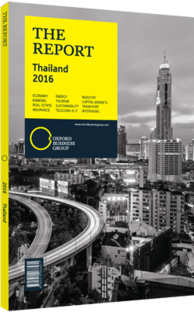The importance of microfinance in rural areas in Thailand
After 15 years of intensive government efforts to extend credit across the nation, micro-loans are becoming increasingly popular among private sector lenders in Thailand. An increasing number of bank and non-bank businesses are now also moving into nano-finance, which provides small-scale loans without any collateral requirements. Although concerns remain about the high interest rates charged for some micro- and nano-loans, these programmes retain significant potential for both domestic and regional expansion, in addition to reducing off-the-books lenders who charge even higher rates.
Microfinance institutions (MFIs) fit into three primary categories: formal and large MFIs, which operate under prudential regulations; semi-formal MFIs, which include agricultural, savings and credit union cooperatives, registered savings-for-production groups, and the Thailand Village and Urban Revolving Fund (TVURF); and informal independent MFIs, which are established with support from external organisations, such as NGOs and local government agencies.
Village Fund
One of the most significant providers of microfinance in Thailand has been the TUVRF, which during its first year in operation in 2001 was tasked with providing BT1m ($30,100) in working capital for locally-run rotating credit associations. The fund’s overarching goal is to create self-sustaining microfinance banks in every Thai village, and although it is government-supported, each village fund is administered by an elected local committee which sets loan amounts and interest rates. Loans are open to resident villagers, and are typically capped at BT20,000 ($602) without collateral.
The TVURF lent BT259bn ($7.8bn) between 2001 and 2005, making it the largest microfinance scheme in the world. A 2011 paper published by the University of Notre Dame and MIT, found that Thai households increased both borrowing and consumption by roughly one for one with each dollar put into the fund. The programme continues to play a major role in helping rural residents access credit, and the Ministry of Finance (MoF) stated that BT60bn ($1.8bn) had been allocated for soft loans to village funds.
Challenges
Despite these recent successes, microfinance activities remain dominated by government lenders, and have been slow to catch on among private institutions until recently. Private providers were unable to compete with the TVURF on cost, and as of 2013, only one private microfinance lender was listed in Thailand, with strict regulations and licensing requirements acting as a disincentive to new private players. This changed, however, following the MoF’s 2013 decision to cap microfinance interest rates at 36%, viewed by many as the first step towards allowing new microfinance lenders into the market. Although 36% interest rates have been criticised as too high for low-income lenders, interest rates on offer at nano-lenders are up to 10 times lower than what borrowers would face with informal financing – such as credit obtained through a loan shark – leaving room for private sector expansion into the market.
Private Expansion
In April 2015 the MoF announced that four new private financial institutions had been granted permits to offer nano-finance services of up to BT100,000 ($3010). Borrowers and businesses with a minimum of BT50m ($1.5m) in registered capital will be able to access nano-finance, with the total loan cost remaining capped at 36%.
New nano-finance providers include Fast Money Company, which allocated BT500m ($15.1m) for its nano-lending programme, and Thai Ace Capital, which has allocated BT100m ($3m) for nano-loans. Fast Money Company has said it hopes to limit non-performing loans to 10% of its nano-finance portfolio. In October 2015 the auto refinancing arm of Tisco Bank, Hi-Way Co, also announced that it will expand into microfinance under the Somwang Sabai Jai brand, offering loans to self-employed borrowers.
You have reached the limit of premium articles you can view for free.
Choose from the options below to purchase print or digital editions of our Reports. You can also purchase a website subscription giving you unlimited access to all of our Reports online for 12 months.
If you have already purchased this Report or have a website subscription, please login to continue.

